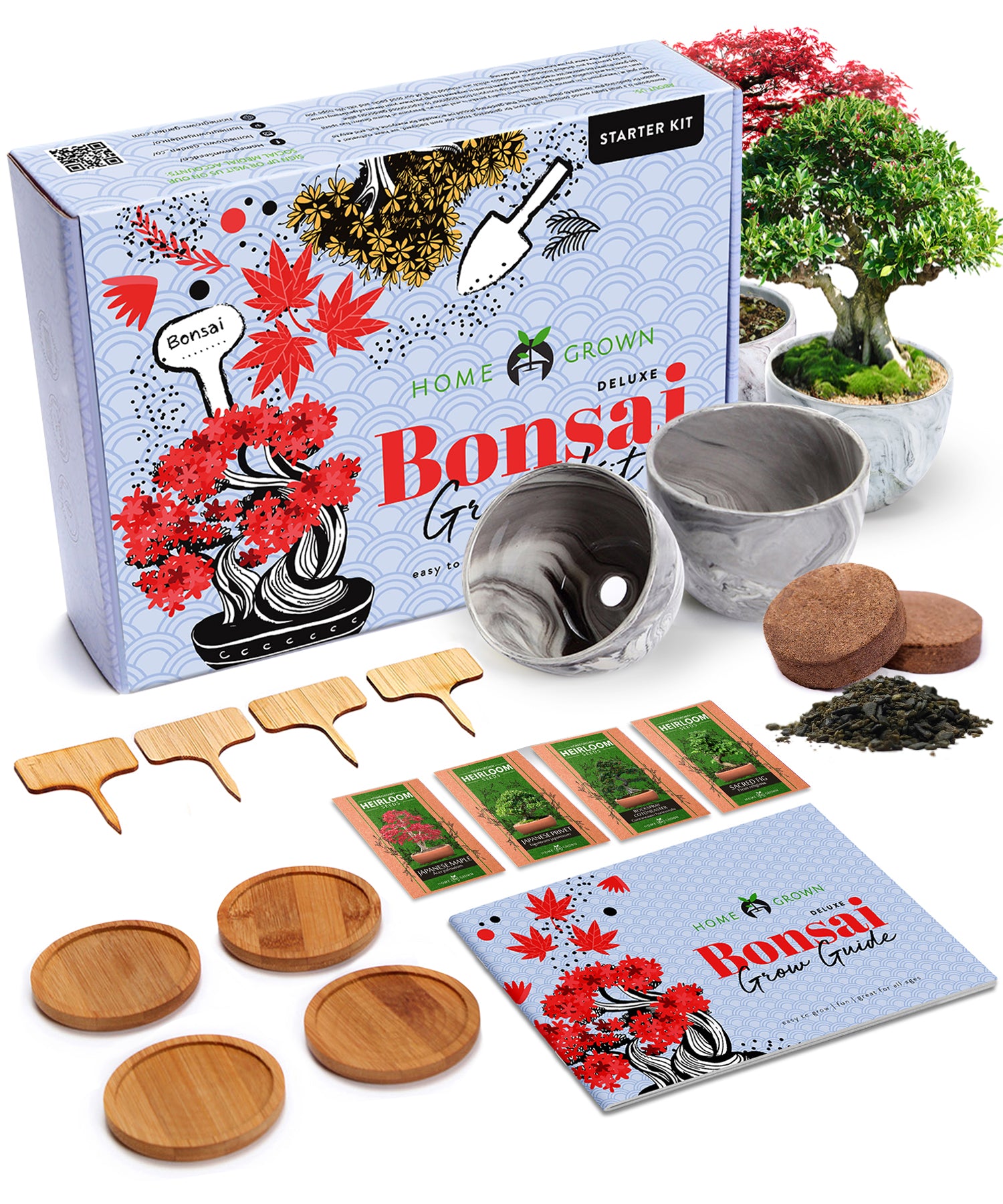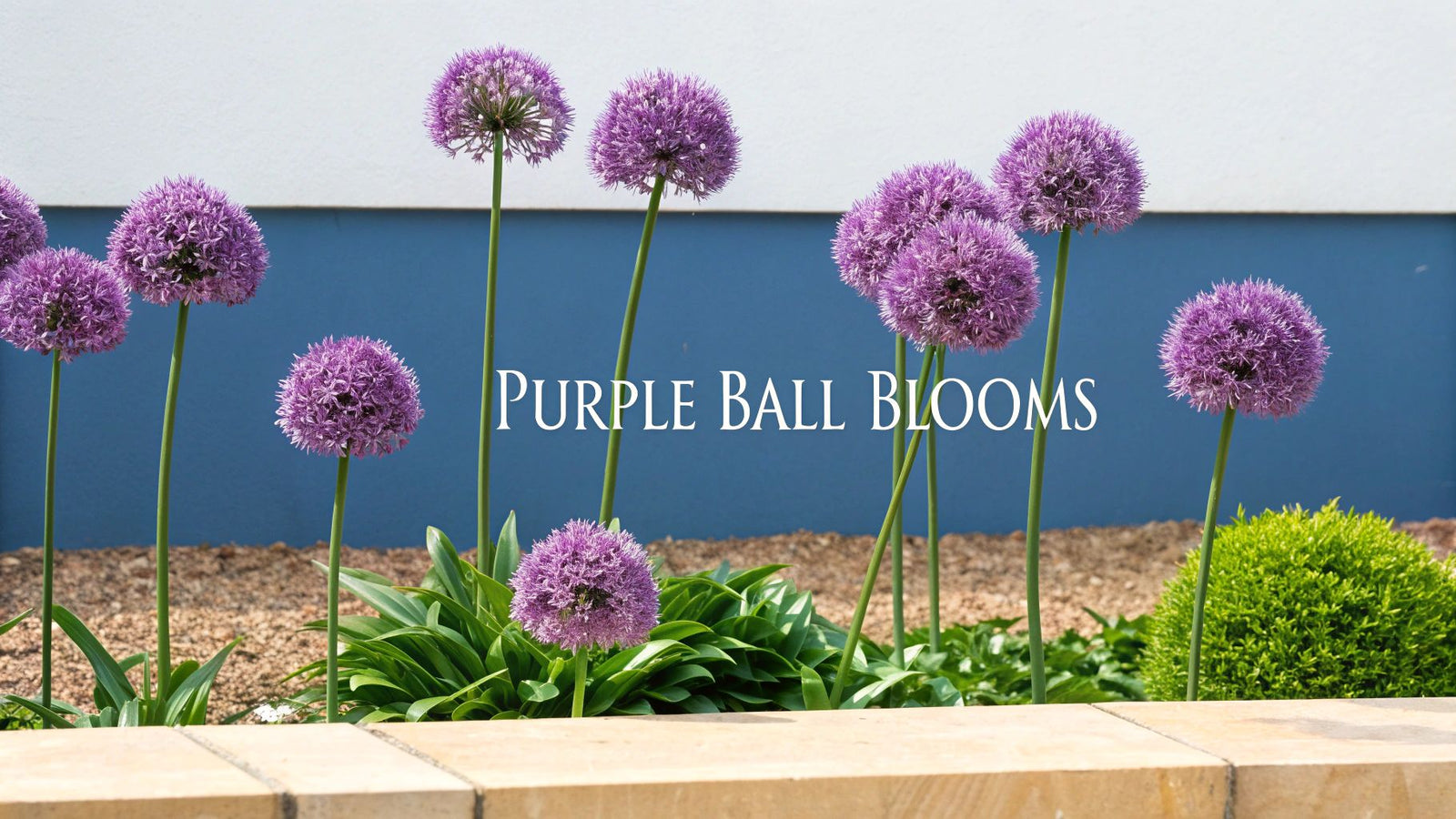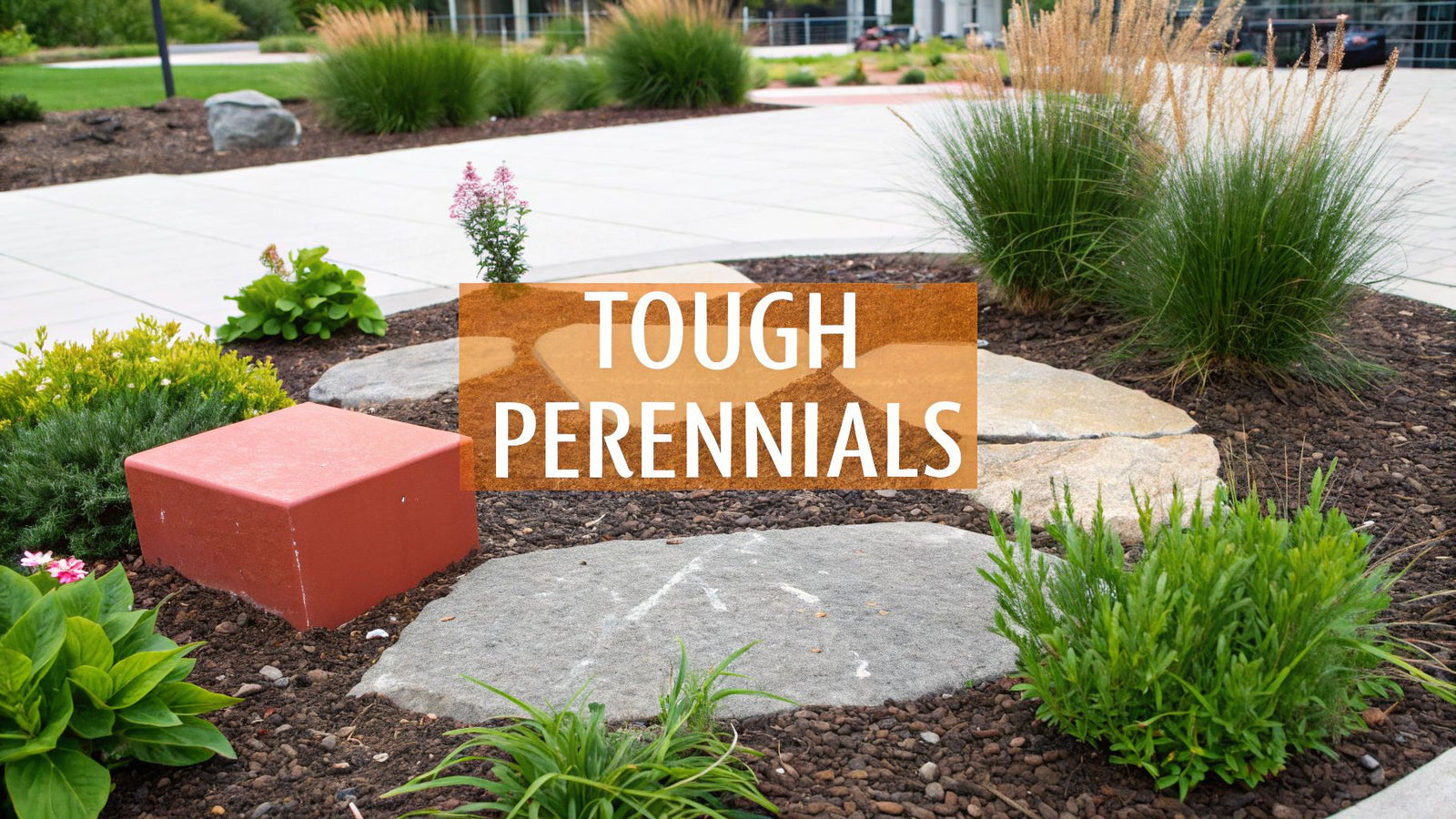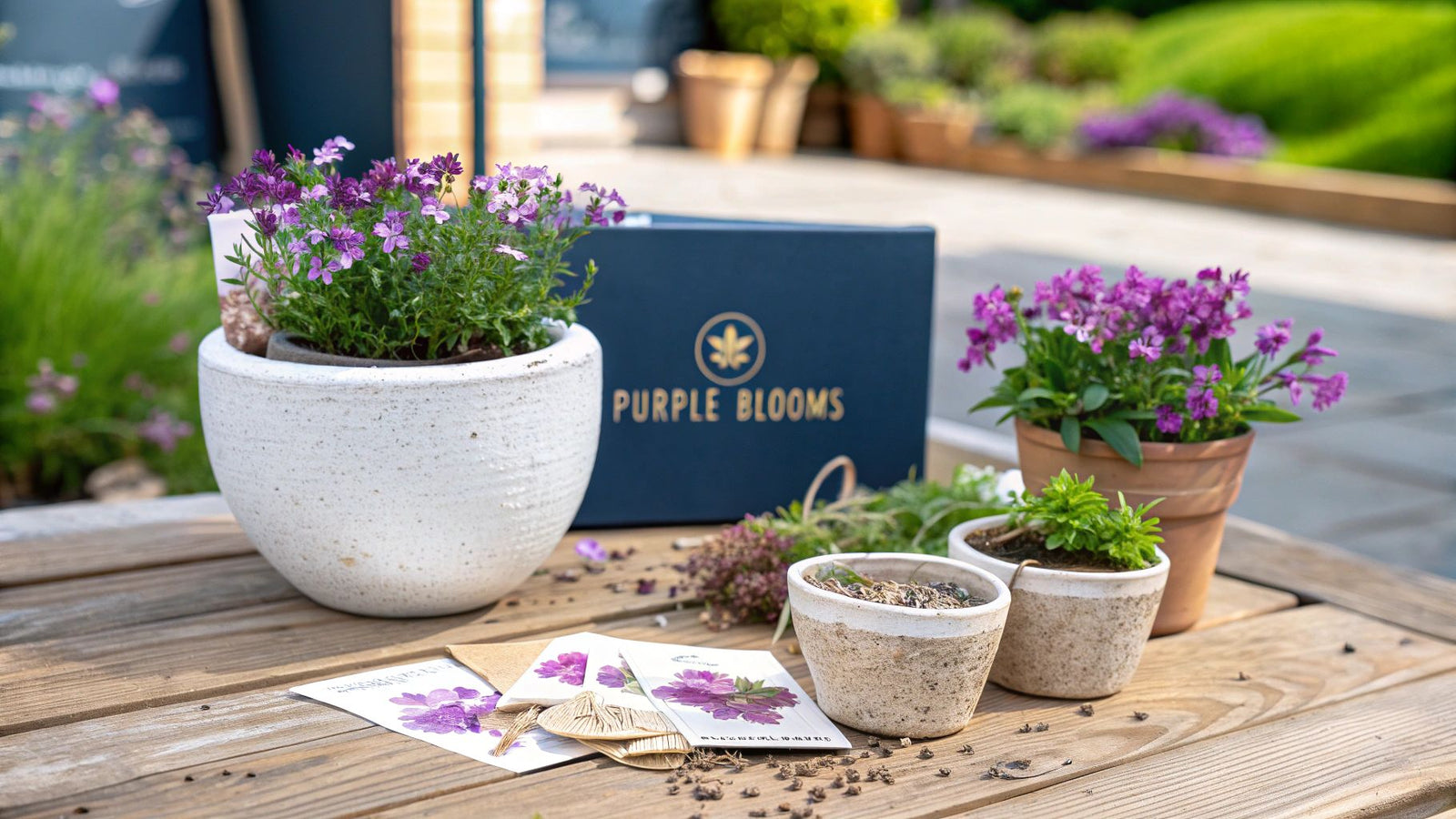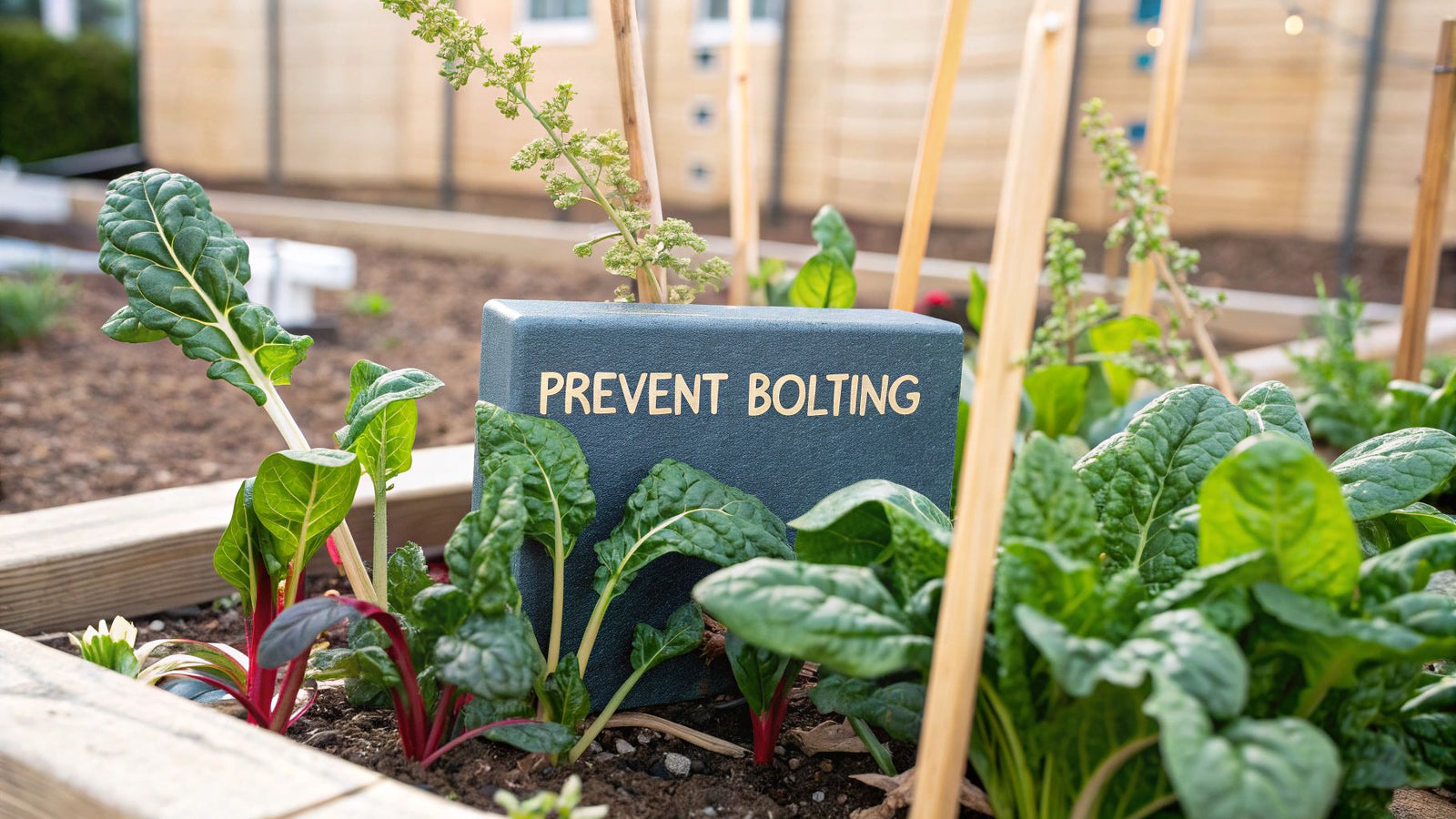
Have you ever watched your beautiful, leafy lettuce suddenly shoot up a tall, gangly stalk and turn bitter almost overnight? If so, you've witnessed plant bolting firsthand. It’s a common headache for gardeners, but it's really just a plant's survival mechanism kicking into high gear.
Think of it as a plant's emergency exit. When it feels stressed, it hits the panic button, stops focusing on growing delicious leaves or roots, and pours all its energy into making seeds for the next generation.
What Is Plant Bolting and Why It Matters
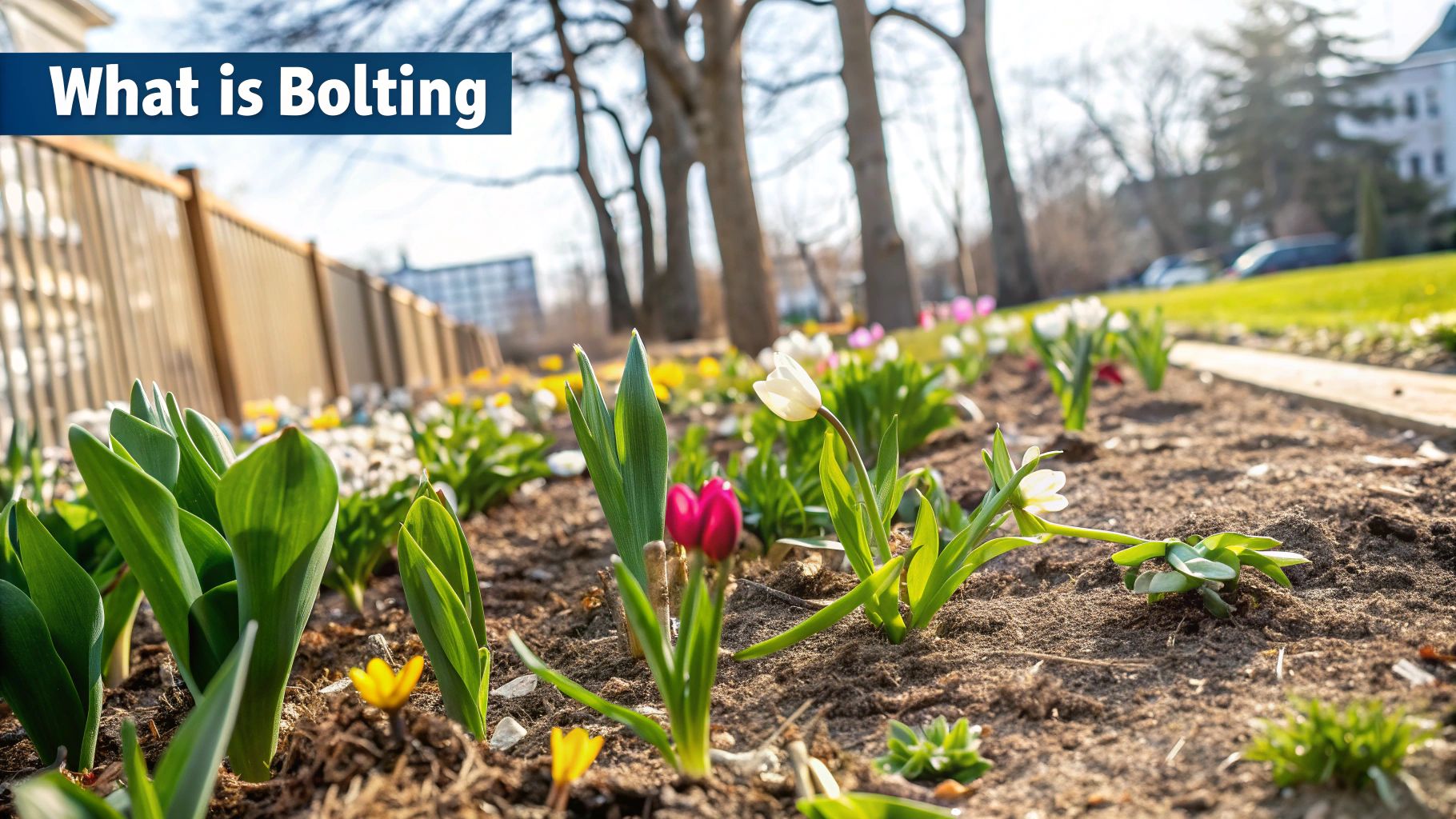
Picture your spinach patch, thriving and destined for fantastic salads. Then, an unexpected heatwave rolls in. The spinach plant interprets this sudden stress as a sign that its life cycle is about to end. It abruptly switches from leaf production into what gardeners call bolting, or "going to seed."
Instead of nurturing the parts we want to eat, the plant sends up a flower stalk. This premature flowering is a natural, albeit frustrating, response to environmental triggers.
The Science Behind Bolting
In horticultural terms, bolting is when a plant develops a flowering stem way ahead of schedule, often before it's ready to be harvested. All the plant's resources get rerouted from its leaves, roots, or heads directly to producing seeds.
This process wreaks havoc on your harvest. The flavor often turns intensely bitter, the texture becomes tough or woody, and the edible parts wither. It’s a frequent problem for cool-season crops like lettuce, cilantro, and radishes. For a deeper dive, you can explore the horticultural definition of bolting on Wikipedia).
For the gardener, bolting signals the end of the line for that specific plant's harvest. The flavor and texture are compromised, often making the crop inedible.
Which Common Garden Vegetables Bolt?
Knowing which of your plants are most likely to bolt is the first step in getting ahead of the problem. Cool-season vegetables are the usual suspects, as they are naturally sensitive to the longer days and rising temperatures of summer.
Here’s a quick reference guide to popular garden vegetables prone to bolting and what it means for your harvest.
| Vegetable | Tendency to Bolt | What Happens to the Plant |
|---|---|---|
| Leafy Greens (Lettuce, Spinach, Arugula) | High | Leaves quickly turn bitter and the plant grows a tall central flower stalk. |
| Root Vegetables (Carrots, Radishes, Beets) | Moderate to High | The plant stops developing its root, which becomes small, fibrous, and woody. |
| Herbs (Cilantro, Dill, Basil) | Very High | Rapidly sends up flower stalks, and the flavor of the leaves diminishes significantly. |
| Brassicas (Broccoli, Cauliflower, Cabbage) | Moderate | Produces small, premature flower heads ("buttoning") instead of a single large, dense one. |
As you can see, bolting affects different plants in slightly different ways, but the outcome is always the same: a disappointing harvest. Keeping this in mind when planning your garden can make a huge difference.
The 3 Main Triggers That Cause Plants to Bolt
If you want to stop your plants from bolting, you first have to get inside their heads, so to speak. Think of bolting as a plant's emergency escape plan. When it senses that its environment is becoming stressful or threatening, it hits the panic button. It ditches the slow, steady process of growing leaves and pours all its energy into making seeds to ensure the next generation survives.
There are 3 main triggers that tell your cool-weather crops it's time to bolt.
1. Temperature Stress
Heat is the number one culprit, hands down. This is especially true for crops that thrive in cool, mild weather. Your lettuce, spinach, cilantro, and broccoli are genetically programmed for spring and fall. When an unexpected heatwave rolls in, they interpret that heat as a sign that summer is coming and their time is running out. It's their cue to flower—fast.
High temperature is a well-documented trigger for bolting in lettuce, a garden favorite. Even though lettuce loves cool climates, just a bit of extra heat can kickstart rapid stem growth and a switch to flowering that makes the leaves bitter and inedible. You can dig deeper into the science of how temperature affects lettuce bolting in this research study.
2. Changes in Day Length
Some plants are incredibly attuned to how many hours of sunlight they get each day, a trait called photoperiodism. As we move from spring into summer, the days naturally get longer. For "long-day" plants like spinach and cilantro, this is a powerful, built-in signal to start flowering, no matter what the thermometer says. It's simply what they're wired to do.
Bolting is essentially a plant's panic response. It switches from a growth mindset (producing leaves) to a survival mindset (producing seeds) when conditions become unfavorable.
This image breaks down how different stressors can lead a plant to bolt.
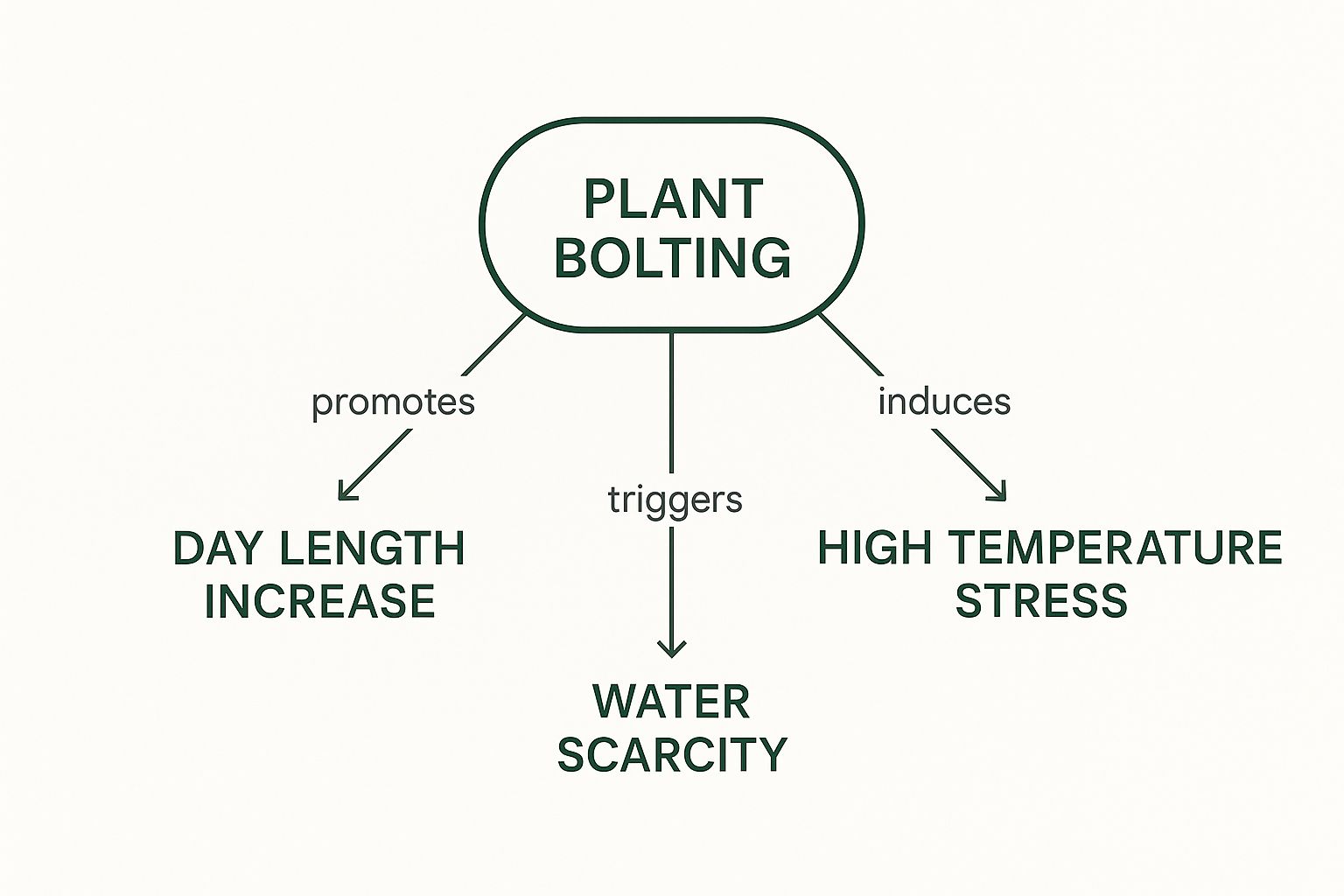
As you can see, things like heat, longer days, and a lack of resources are all distinct signals that tell the plant to wrap up its leafy growth stage and move on.
3. General Plant Stress
Beyond just temperature and sunlight, a whole host of other garden stresses can convince a plant to bolt. Anything that makes a plant feel like its survival is on the line can be a trigger.
Think about these common garden problems:
- Inconsistent Watering: Too little water (drought) or too much (waterlogged soil) can send a plant into shock.
- Poor Soil: If the soil is missing key nutrients, the plant knows it can't support long-term growth and will try to reproduce instead.
- Root Disturbance: The shock from being transplanted, or even just having its roots damaged while you're weeding, can be a major stressor. That's why figuring out when to start seeds indoors can prevent transplant stress and give your plants a much stronger start.
7 Proven Ways to Prevent Plant Bolting in Your Garden
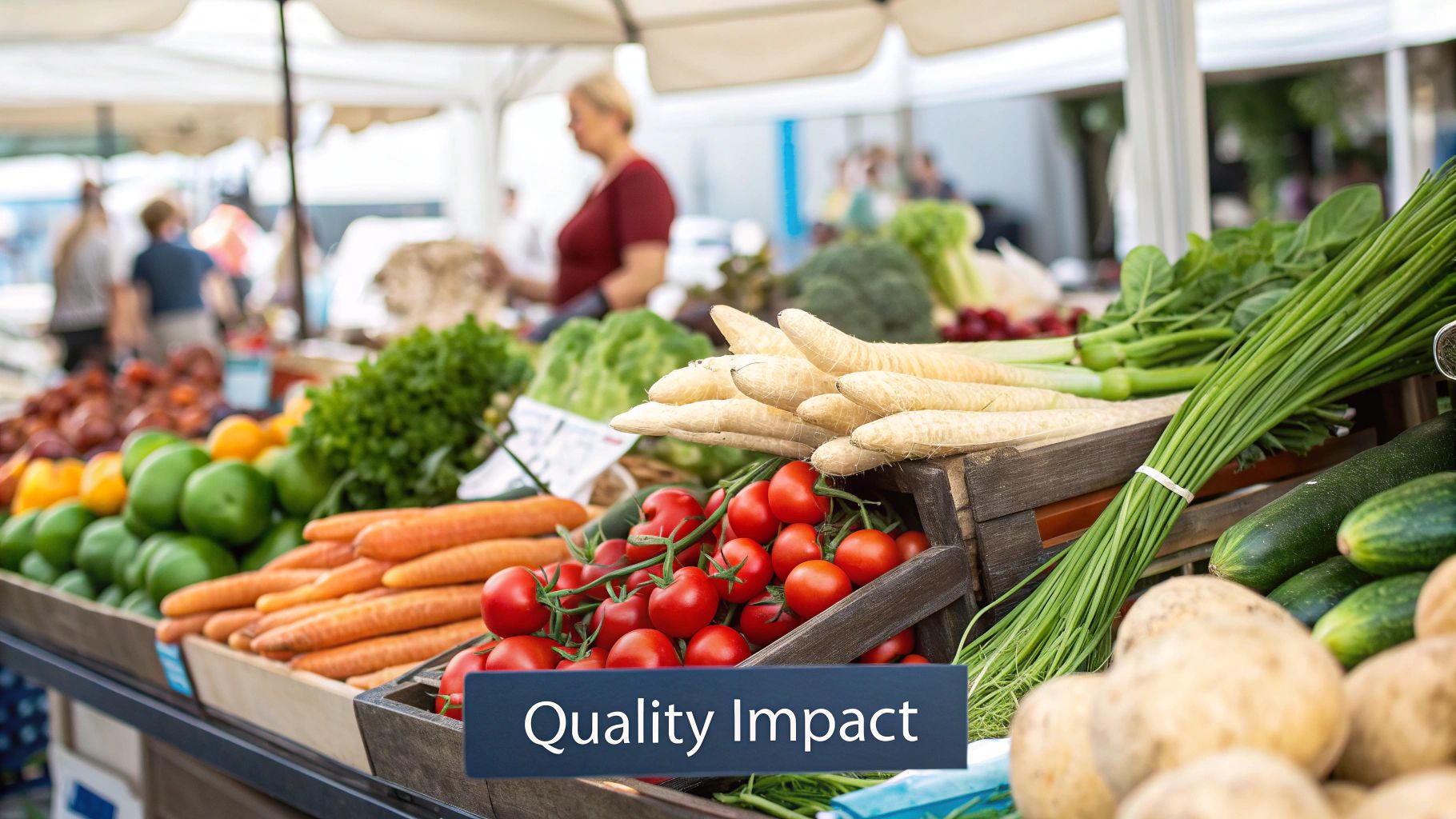
Now that you know what makes a plant bolt, you can get ahead of it. The best way to guarantee a long, delicious harvest is to stop bolting before it ever starts. Think of these methods as your playbook for keeping cool-season crops happy and focused on growing leaves and roots, not flowers.
This whole action plan boils down to outsmarting the main triggers—heat, day length, and stress—to convince your plants that it’s still prime growing season.
1. Choose Bolt-Resistant Varieties
Honestly, your best defense starts before you even open a seed packet. Plant breeders have worked wonders developing specific varieties of lettuce, spinach, and cilantro that are "slow to bolt." These aren't your grandmother's heirlooms; they've been selected specifically to handle warmer days and longer daylight hours.
When you're shopping for seeds, keep an eye out for descriptions like "slow-bolt," "heat-tolerant," or "bolt-resistant" on the label. It’s a simple choice that buys you precious time and can easily extend your harvest by weeks, especially if your local climate has a habit of throwing surprise heatwaves in late spring.
2. Master Your Planting Schedule
In gardening, timing is everything. For your cool-season favorites, the goal is to get them grown and harvested before the brutal heat and long days of summer set in. This means planting them as early in the spring as you can, right after the soil is workable.
You can also use a technique called succession planting. By sowing a new batch of seeds every two weeks, you'll have a continuous supply of young, vigorous plants. Younger plants are far less likely to bolt than older ones that have been in the ground for a while. Don't forget about the fall! A second planting in late summer lets your crops mature in the beautiful, cooling weather of autumn.
3. Keep the Soil Cool with Mulch
Here’s one of my favorite and most effective tricks: insulate the soil. Spreading a 2- to 3-inch layer of organic mulch—think straw, shredded leaves, or grass clippings—over your garden bed is a game-changer. It shields the soil from the sun, keeping it cooler and helping it hold onto moisture.
Think of mulch as a protective blanket for your plant's roots. When the root zone stays cool and moist, you’re sending a clear signal to the plant: "Everything's fine, no need to panic and make seeds."
This one simple step can dramatically lower the soil temperature on a scorching afternoon, effectively tricking your crops into thinking it's still cool, pleasant springtime.
4. Provide Afternoon Shade
That afternoon sun is a killer. It's the hottest and most intense part of the day, and it can really stress out sensitive greens. You can give them some relief by being clever with your garden layout. Try planting taller, sun-loving plants like tomatoes or pole beans just to the west of your lettuce or spinach patch to cast a shadow during the hottest hours.
If that’s not an option, a shade cloth works beautifully. These special fabrics are designed to block a certain percentage of sunlight, which lowers both the light intensity and the temperature without suffocating the plants. A 30-50% shade cloth is usually the sweet spot for keeping leafy greens and herbs from bolting.
5. Ensure Consistent Watering
Drought is a major red flag for a plant. When the soil dries out, it’s a huge stressor that practically screams, "Make seeds now before you die!" To avoid that panic response, you need to water deeply and consistently. The goal is to keep the soil evenly moist, like a wrung-out sponge, but never soggy.
Get in the habit of checking the soil every day or two, especially when it's hot and windy. If you can prevent your plants from ever getting to the point of wilting, you'll keep them in a healthy, productive growth mode.
6. Harvest Leaves Regularly
This one feels a bit like a magic trick. For leafy greens like lettuce, spinach, and cilantro, the more you harvest, the more they grow. This is often called the "cut-and-come-again" method, and it works by keeping the plant in a constant state of leafy, juvenile growth.
Just snip the outer, more mature leaves and leave the central growing point alone. Not only does this give you a steady stream of greens for your salads, but it also short-circuits the plant's natural urge to send up that dreaded flower stalk.
7. Transplant with Care
Last but not least, be gentle. Any kind of shock can trigger bolting, and disturbing the roots is a big one, especially for sensitive plants like broccoli and cauliflower. When you're moving seedlings into the garden, handle the root ball as carefully as possible. Don't forget to harden them off first—gradually exposing them to outdoor conditions for a week or so—to help them acclimate without the shock.
While these tips work wonders for most annual vegetables, you might also consider adding some super low-maintenance plants to the mix. For some great ideas, check out our guide on how to choose and grow perennial vegetables in your garden.
Bolting Prevention Strategy Checklist
To help you keep track, here is a quick-reference table. It breaks down each prevention tactic and shows which plants benefit the most.
| Prevention Strategy | Best For These Plants | Key Action |
|---|---|---|
| Choose Resistant Varieties | Lettuce, Spinach, Arugula, Cilantro | Select seeds labeled "slow-bolt" or "heat-tolerant." |
| Master Planting Schedule | All cool-season crops | Plant early in spring; plant again in late summer for fall. |
| Apply Mulch | All sensitive plants, especially leafy greens | Add a 2-3 inch layer of organic mulch to cool the soil. |
| Provide Afternoon Shade | Lettuce, Spinach, Radishes, Cilantro | Use shade cloth or taller plants to block intense sun. |
| Water Consistently | All garden vegetables | Keep soil evenly moist to prevent drought stress. |
| Harvest Regularly | Leafy greens & herbs (Lettuce, Basil) | Use the "cut-and-come-again" method on outer leaves. |
| Transplant Gently | Broccoli, Cauliflower, Cabbage, Lettuce | Minimize root disturbance and harden off seedlings properly. |
Using a combination of these strategies will give you the best shot at a long, productive, and bolt-free harvest from your cool-season crops. Happy gardening
5 Early Warning Signs of Bolting to Watch For
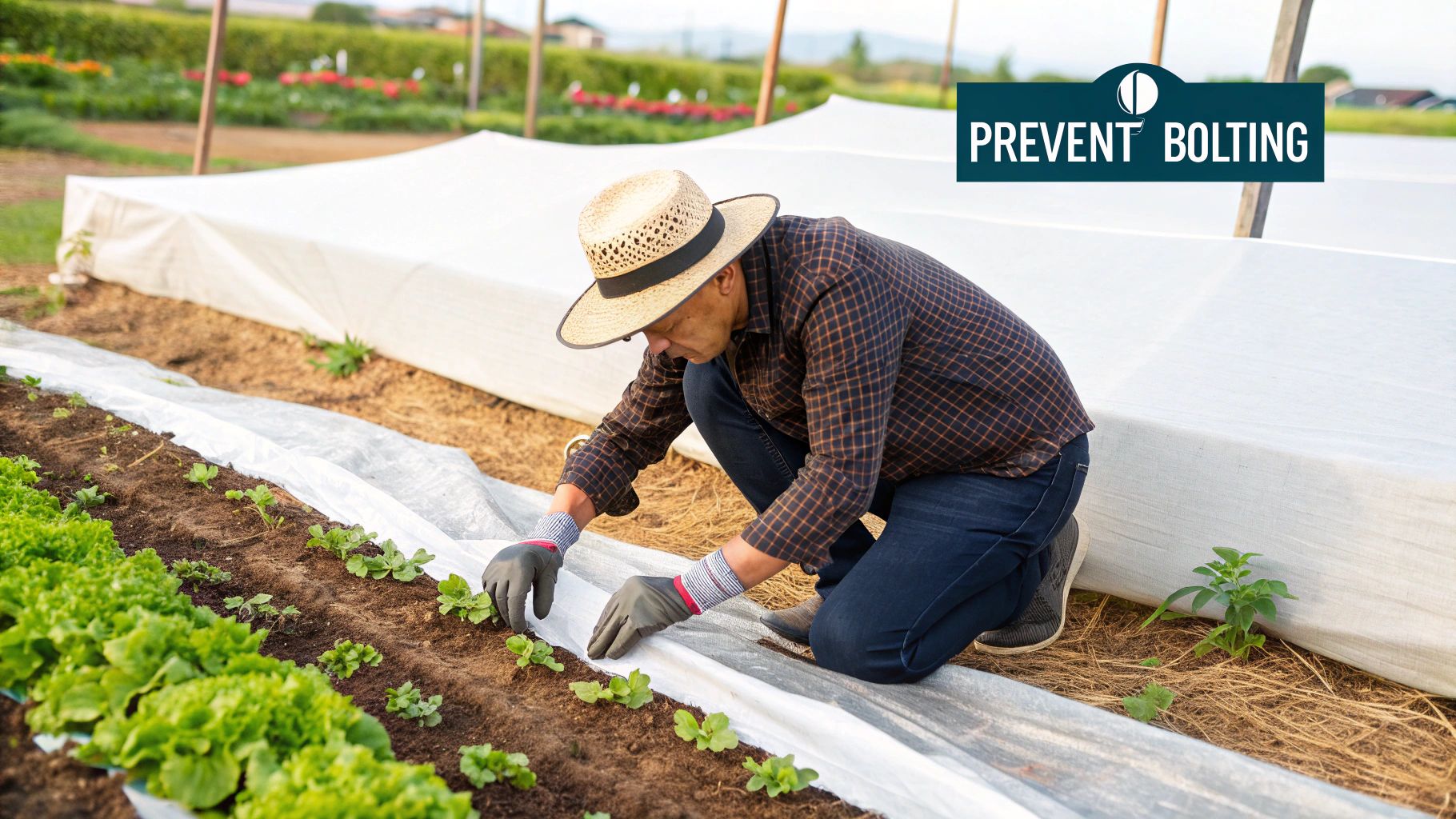
Catching bolting early is everything. Once a plant decides to bolt, there’s no turning back. But if you spot the signs quickly, you can usually still harvest something before the flavor completely tanks. It really pays to know what you're looking for.
Think of it as being a detective in your own garden. You have to keep a close eye on your plants, especially the vulnerable cool-weather crops like lettuce, spinach, and cilantro. Daily checks are your best bet, particularly when the weather heats up or the days start getting noticeably longer. The first clues are often subtle.
Here are the 5 key changes to watch for. Spotting any of these is a clear signal that your plant is switching gears from growing tasty leaves to making seeds for the next generation.
-
Upward Stretching: This is often the very first clue, especially for heading plants like lettuce or cabbage. Instead of staying low and forming a tight head, the center will begin to elongate and push upward. The plant loses its compact, rounded shape.
-
Leaf Shape Changes: Look closely at the newest leaves growing from the center. A bolting plant's new growth might look different—often smaller, more pointed, or even a bit misshapen compared to the older, established leaves. This is a tell-tale sign the plant's focus has shifted.
-
Emergence of a Flower Stalk: This is the most unmistakable sign of them all. You'll see a tough, central stalk begin to shoot up from the heart of the plant. With leafy herbs like cilantro or dill, this stalk can seem to appear overnight.
-
Bud Formation: Soon after that stalk appears, tiny flower buds will start to form at the top. Once you see buds, you're on borrowed time. The plant's flavor and texture are already on a rapid decline.
-
Change in Leaf Texture: As the plant funnels all its resources into flowering, the existing leaves can become tougher and less vibrant. They may lose that tender quality you're aiming for.
The moment you spot these signs, your best move is to harvest immediately. The flavor might already be a little more bitter than you'd like, but trust me, it will be far better than if you wait even a few more days.
While we gardeners watch for these visual cues, scientists actually grade bolting on a formal scale, measuring things like stem length and the percentage of bolted plants in a crop. It's pretty interesting to see how scientists measure bolting stages here in a research setting.
Ultimately, preventing bolting starts way back at the beginning. Healthy, unstressed seedlings are much less likely to bolt when they mature, so giving them a good start is key. You can find some great tips in our guide on how to germinate seeds faster.
3 Things to Do When Your Plants Have Already Bolted
So, you've spotted it—a flower stalk shooting up from your prize-winning broccoli or lettuce head. Your first instinct might be to panic or feel like you've failed. But seeing a plant bolt isn't a total disaster; think of it more like a fork in the road. You have a few options, and the right choice depends on your gardening goals.
Your first move, in most cases, should be to act fast. The moment you see those first signs of bolting, your best chance at salvaging the crop is to harvest it right away.
1. Harvest Immediately
Once a plant starts the bolting process, there's no turning back. It switches all its energy from growing tasty leaves or heads to making seeds, which unfortunately turns the edible parts bitter and tough.
By harvesting immediately, you can often catch the plant while its flavor is still perfectly fine, or at least acceptable. Waiting even a few days can be the difference between a slightly sharp-tasting leaf and a completely inedible, woody one. If getting food on the table is your top priority, this is your best damage-control strategy.
2. Let It Flower for Pollinators
What if you missed the window and the crop is already too bitter to eat? You still have a great alternative: just let it go. Allowing the bolted plant to complete its flowering cycle can be a huge bonus for your garden's overall health.
The flowers from bolted crops like cilantro, lettuce, and broccoli are an absolute magnet for beneficial insects. Bees, butterflies, and other pollinators will flock to the blooms, which in turn helps pollinate other plants in your garden—like your tomatoes, squash, and peppers.
3. Let It Go to Seed
Your final option is to let the plant live out its full life and collect the seeds for next season. This is a fantastic way to move toward a more self-sustaining garden and save a little money on seeds.
But there’s a crucial catch here: this only works for heirloom or open-pollinated varieties. Hybrid seeds are a different story; they won't produce plants that are true to the parent, often leading to weak or strange-looking results. If you know you planted heirlooms, letting one or two plants go to seed can be a rewarding experiment. Try to see it not as a failure, but as a valuable lesson in the rhythms of gardening.
Your Top 3 Questions About Plant Bolting Answered
Even the most experienced gardeners run into puzzling situations, and plant bolting is definitely one of them. Let's tackle some of the most common questions that come up. Think of this as a quick, practical guide to help you handle this tricky garden issue with a bit more confidence.
1. Can You Stop Bolting Once It Starts?
In a word, no. Once a plant starts the bolting process by sending up that tell-tale flower stalk, it's a one-way trip. The plant has flipped a hormonal switch, shifting its entire focus from growing tasty leaves to making seeds. You can't undo that.
But that doesn't mean you're powerless. While you can't reverse bolting, you can react to it. The second you see a plant starting to stretch, your best bet is to harvest it right away. This lets you salvage what you can before the flavor and texture take a nosedive into bitter and woody territory.
2. Which Vegetables Are Most Likely to Bolt?
Bolting is almost always an issue with cool-season crops. These are the plants that just love the mild weather of spring and fall. When summer heat and longer days arrive, it’s a biological alarm bell telling them their time is running out and they need to reproduce—fast.
Here are the usual suspects you'll find in most gardens:
- Leafy Greens: Lettuce, spinach, and arugula are famous for bolting at the first sign of summer heat.
- Herbs: Cilantro is notorious for this, seemingly bolting overnight. Dill and basil are also quick to follow.
- Root Vegetables: Heat stress or leaving them in the ground too long can cause radishes, carrots, and beets to bolt, which makes the root inedible.
- Brassicas: Broccoli, cauliflower, and cabbage can bolt, sometimes leading to tiny, underdeveloped heads—a frustrating issue known as "buttoning."
3. Are Bolted Vegetables Safe to Eat?
Absolutely, they are perfectly safe to eat. The problem isn't one of safety, but of quality. It all comes down to flavor and texture.
When a plant bolts, it reroutes its energy. The sugars that once made the leaves sweet and the roots crisp are now being sent to fuel the new flowers and seeds.
This biological shift makes the parts we eat bitter and unpleasant. Leaves get tough, and root vegetables often become fibrous and woody. So, while you can eat them, you probably won't enjoy it. This is why harvesting immediately is your best move—a slightly off-tasting leaf is much better than a truly bitter one a week later.
Ready to start a garden with seeds chosen for success? At Homegrown Garden, we offer a wide range of heirloom and slow-bolt seed varieties perfect for any home gardener. Explore our collections and get all the supplies you need.

